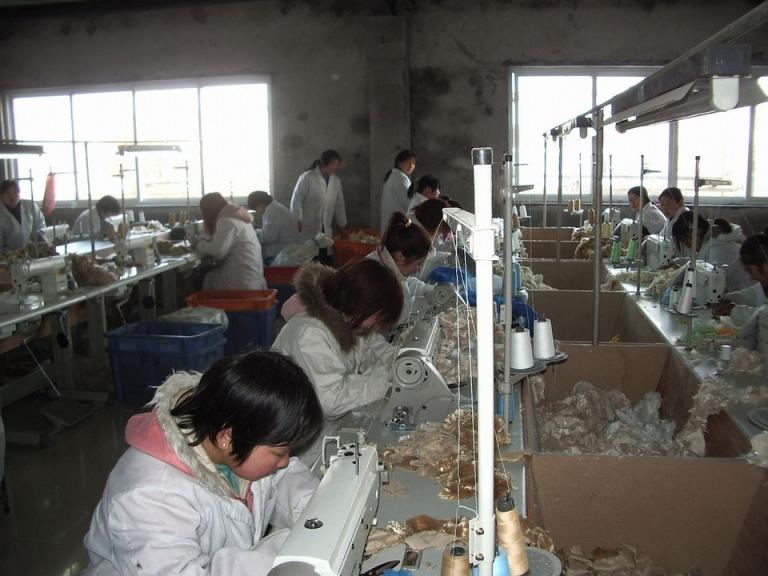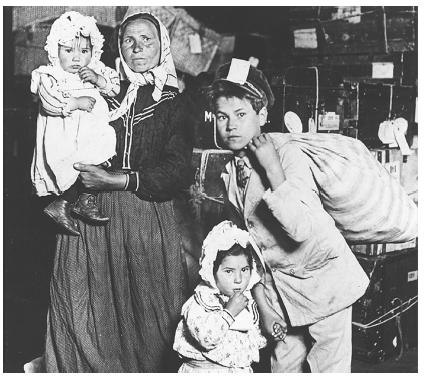That was a part of the failed 2006 immigration bill, helpfully summarized by Wikipedia, though with few specifics on this topic. My memory is that this was touted as the ultimate solution to illegal immigration: as many employers as wished to hire non-U.S. residents would simply bring workers in, on a temporary basis, with, rather than a “green card” (which isn’t actually green), a “blue card,” so all those individuals who would have otherwise come illegally would no be able to come legally. Not surprisingly, the Mexican government was in full support.
As you might guess from the fact that the bill didn’t pass, this was not fully embraced by the American people and, while the bill containing these provisions passed the Senate with 62 votes, the House was not so enthusiastic. But still — it’s hard to imagine this mindset today. Here’s a Washington Post columnist, Tamar Jacoby, on March 26, 2006:
But among those who recognize the necessity of a continued flow of immigrants to do dirty, unskilled jobs that educated Americans increasingly no longer want to do, the mantra goes unquestioned: What’s needed is a guest worker program to deliver this labor in a timely, efficient way.
. . . Policymakers from George W. Bush to Sens. John McCain, John Cornyn and Edward Kennedy grasp that the main problem with our immigration system is the lack of visas for foreign workers. International supply and demand — demand created by U.S. labor needs — generate a flow of roughly 1.5 million immigrants a year. But our annual immigration quotas accommodate less than two-thirds of that number, producing an annual spillover of about a half-million illegal workers that erodes the rule of law and undermines our security.
Now, the column then continues by disputing the guest worker program, not because of the numbers of unskilled immigrants brought in, but because they would be expected to return to their home countries — instead, she says, we should roll out the welcome mat for increased levels of immigration on a permanent basis.
This was a little under 10 years ago. How times have changed! From confident predictions that we would produce 1.5 million jobs a year in excess of those required by already-present workers, indefinitely, and 500,000 jobs in excess of what are filled by legal immigration, as far in the future as you can imagine, to our present day situation of low labor force participation, underemployed workers stuck with part-time jobs because that’s all they can find, employers able to pay minimum wage indefinitely, without customary pay hikes on service anniversaries, because of the tight job market — and with fears of future long-term unemployment with no remedy other than a minimum income program.
I’m reminded of this because of Megan McArdle’s recent blog post, “Don’t Blame Americans for Blaming China,” in which she cites new research that has convinced her that she was wrong about the impact of opening up trade with China 20-some odd years ago on American workers:
It’s been obvious for a while that China has played some role (though not the biggest) in the decline of labor-market opportunities for workers without a college diploma. But the authors suggest that the effect is both bigger, and longer lasting, than I would have predicted. Nor has much seemed to help the adjustment: workers are less mobile than expected, domestic American industries less able to absorb the surplus, particularly among the lower-skilled workers whose human capital was job- and industry-specific.
It’s been a perfect storm of impacts on low-skilled workers in the U.S.: immigration, automation, and globalization have all reduced their opportunities. In net (unlike the fairytale of so many unskilled jobs we need to import workers for them), in the long term, we rely on declining prospects for low-skilled workers being balanced by declining numbers of low-skilled workers — as each generation produces a greater proportion of more educated workers. But that hasn’t been happening, and those unskilled workers are being left behind.
Image from https://pixabay.com/en/worker-factory-sewing-machine-13550/














